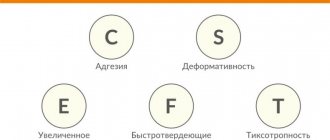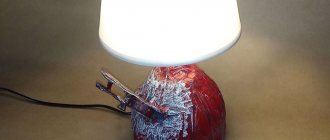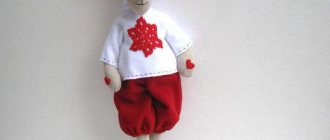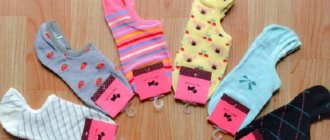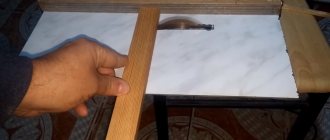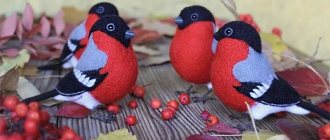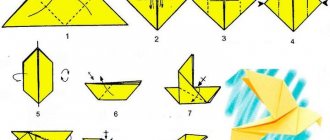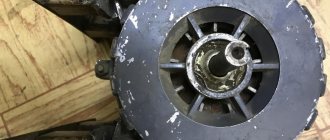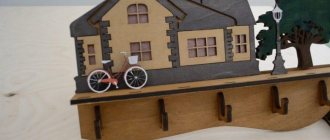Every day we use ballpoint pens, there are printers on our desks that work almost without interruption. We are already so accustomed to this that we don’t think about how it works. And the first step towards the invention of all these convenient devices was the recipe for an amazing composition that can leave lasting marks on paper and fabric. However, today we want to talk about what ink is made of. A short excursion into history and modern technology will be interesting for adults and children.
Ancient tomes
The thinnest parchment, lines written on tanned leather, ancient manuscripts always amaze with the fact that you can still easily make out what is written. The first ink was made very simply - they mixed soot with something sticky. It was essentially mascara that dried out and cracked. In addition, it was quite viscous; you had to get the hang of it to make a beautiful line. At that time the recipe was strictly classified. Only the clergy knew what ink was made of. By the way, there were many variations. They took honey as a base and added gold powder to it. A composition of elderberries and walnuts was widely used. But all this has already sunk into oblivion. Today, ink production has become simple and affordable. Let's follow the chain further.
Ink from gall nuts
Continuing to consider what ink is made of, we cannot forget the famous discovery, namely, special growths on oak leaves. They are called galls, and insect larvae - gallworms - live in them. That is why the growths are called ink nuts. The juice was squeezed out of them, then mixed with iron sulfate and glue was added. The result was a durable composition with a beautiful shine. Even today, the surviving manuscripts look very fresh. However, there was one important nuance. This ink was colorless; what was written could be read only when the letters were dry.
3D technology pen
A necessary condition for its manufacture is a glue gun. After disassembling it using a screwdriver, the push mechanism is removed, and part of the handle at the bottom is sawed off.
The diameter of the outlet hole is reduced by placing a paper clip in it and fixing it in any way. You need to purchase a small fan and attach connectors to its power wires to connect the Krona battery. It is attached to the pistol from below. To install the entire structure, plastic clamps and glue are used.
Revolution in history
In the 19th century, people became more educated; many already knew what ink was made of. In 1885, another coup was carried out. The teacher invented alizarin ink. They were also gall, but had an intense color thanks to a unique additive. Blue-green in the bottle, they turned black when applied to paper. This was achieved by adding krappa, that is, an extract from madder roots.
Now the technical revolution was in full swing, and they had already learned to replace crappies with artificial dyes, and ink nuts with gallic acid. But the progress did not stop there. The simplest way to produce aniline ink was found, that is, to obtain a synthetic dye diluted in water. Using this technology, it has become possible to synthesize compositions of a wide variety of shades. However, it remains a mystery how the ancient monks made inscriptions with ruby, mother-of-pearl and sapphire ink. These compositions are still known in some monasteries, but this art has never left their walls.
The history of writing with a pen
Already from the 7th century, sharpened bird feathers were used to write letters. But not every feather was suitable for this process. Most often they were crows, peacocks or swan. Thus, great writers such as Pushkin, Lermontov, Gogol created their immortal masterpieces only with the help of a well-sharpened quill pen.
It was very important to know how to sharpen a pen for writing, because the quality of writing depended on it. For example, Pushkin did not allow anyone to sharpen his feathers. Moreover, he knew the secret about the goose feather: if you take it from the left wing, then, due to its bend, it fits comfortably in the hand and writes letters beautifully.
A well-made and beautifully sharpened pen could be an expensive gift. Thus, Pushkin’s pen, which was given to him by the German poet Goethe, is still kept in the same rich case in the poet’s apartment museum in St. Petersburg.
It's actually not that easy to write a letter with a sharpened quill pen. If a person did not know and did not know how to handle it correctly, then when drawing any line or oval from right to left or from bottom to top, small nasty splashes would fly off from the pen. Moreover, if you pressed very hard on the pen, it would wear off in a short time. And what a creak there was when writing! Even Gogol once mentioned one of the St. Petersburg offices: “The noise of feathers was more like how several carts with brushwood passed a quarter of an arshin with withered leaves...”.
Experts at the Witch's Happiness store recommend:
Magic notebook "Dryad" Book of Shadows from "Witch's Happiness"
920 ₽
buy
Ink “Bat's Blood” Witchcraft ink, 30 ml
1 390 ₽
buy
Magic notebook “Black Cat” with pen Notebook A5 size (17 cm)
2 190 ₽
buy
However, despite all the existing shortcomings, the quill pen has served man well for a whole millennium. Not a single royal decree, not a single handwritten book was complete without the use of a well-sharpened pen.
Articles recommended for reading:
- How to choose a talisman according to your zodiac sign
- Strong amulets for the home and their meaning
- Feng Shui sectors - Eastern wisdom for your well-being
The pen was used by alchemists to create formulas, and by pharmacists to write down recipes. They wrote many mysterious messages.
They say that the reign of goose feathers sharpened for writing ended in this way. The servant of one man, who wrote a lot and because of this constantly changed pens, felt sorry for the owner. And one day the idea came to his mind about why not make the same feather, but from a more durable material, for example, steel. Despite all his efforts, the pen turned out to be unattractive in appearance; moreover, the servant did not think of making a longitudinal slit at the tip. His pen wrote without pressure and the ink splattered heavily. After a while, they figured out how to make such a slot, and then a steel writing pen completely replaced the sharpened quill pen.
No one would have thought that the inkwells would also be forgotten. The inventors were just thinking about how to make a sharpened pen, pen and inkwell into one. Almost a hundred years later, the so-called “stylographic” pen for writing was invented. How did it work and what was it like? It was a hollow pen into which ink was poured. At the end of the handle there is a thin metal tube into which a wire is inserted. Due to this, a narrow channel was formed through which, when writing, ink leaked through, rather than flowed (an important point!).
The inventors of that time surprised us with all kinds of ideas. For example, a structure was invented that represented a suspended tank filled with ink for writing, which flowed down through rubber tubes. When we turned the tap and squeezed the rod with our fingers, the ink did not flow; when we released it, it began to flow. These “eternal pens” were used for writing in banks, offices and other public places.
But in residential buildings this writing device was not used, because who would want to install a whole barrel of ink under their ceiling? One person found a way out of the situation. It turns out that all you had to do was cut the metal rod into pieces, sharpen each one and insert a stick into it. He got the so-called “insert”. Schoolchildren used a similar pen for writing in the 1960s, and in villages in the 1970s. To this day, some post offices still use stationery pens on a wooden stick for writing.
Over the past 200 years, many specially sharpened quills for writing have been invented: stationery quills - with sharp ends and a curved nose, poster quills - they were used by artists, cartographic quills - they were used to draw maps, music quills had a double split and were used by note scribes. Writing pens were of various shapes (for example, in the shape of the Eiffel Tower), and they depicted portraits of Emperor Napoleon and the Queen of England. For noble people, writing pens were decorated with personalized coats of arms.
However, the quill pen is not such an ancient writing device. The very first were kalams, which were used for writing in Ancient Egypt 4500 years ago. These were pointed reed sticks that were dipped in ink. Unfortunately, the kalams have not “survived” to this day; they are not in any museum, but we have the manufacture itself with a detailed description of their use.
The Egyptians had another invention for writing, which was found in the tomb of Tutankhamun. This is a lead tube, the end of which has been pointed. Inside it was a reed filled with a dark liquid, which, flowing down to the very tip, left a dark mark on the papyrus. Thus, it is once again confirmed that the Egyptians invented a writing medium before the idea of using a quill pen for writing appeared. But everyone forgot about this, and the pen was considered the only invention for writing.
From antiquity to modern times
Since ink is made today on a huge, industrial scale, it is easy to guess that humanity no longer turns to nature. Now all produced compounds can be divided into several types. The first group remains the most popular, cheapest and simplest. This is essentially making ink from gallic acid.
The second option is to obtain the composition using tannin. It is found commercially in the form of a yellowish powder. Glycerin and gelatin are used as thickeners. In this way, small amounts of ink can be made that will be relatively safe even if accidentally ingested. Of course, this is best avoided.
What can be made from a pen
The body of a ballpoint pen can serve as a material for various crafts.
- You can make an original stand for your mobile phone. To do this you will need four to five pens and rubber bands for money. Twist the three handles with a rubber band to create a stable tripod. Screw one or two handles horizontally to the two legs, depending on the thickness of the phone. Install the resulting structure slightly at an angle and place the smartphone on it. Watching videos is very convenient and hands free.
- You can make a crossbow from a pen and four simple pencils. From pencils, use rubber bands to assemble a base in the shape of the letter “T”. Attach an old pen to the bottom of the letter. The function of the bowstring will be performed by an elastic band. You can use old empty rods as arrows. The toy for boys is ready. Many probably remember multi-tiered chandeliers with transparent plastic pendants.
- Using the same principle, you can make a lampshade for a table lamp. You will need a plastic circle attached to the lamp, and a lot of multi-colored transparent pen housings. Stationery is secured in a circle using wire or paper clips. When you turn on the lamp, the lampshade will look like crystal and scatter multi-colored light.
How to make them yourself
If you really want to try yourself in the role of a medieval monk, then we will tell you how to make ink with your own hands. All components are quite simple. You will need to collect three grams of ink nuts, two grams of iron sulfate and the same amount of gum arabic. Ink galls need to be crushed into powder and poured into a vessel. Pour 30 ml of water into it. Pour the same amount of water into another vessel and add all the other ingredients. After two days, you can mix both liquids, stir and leave for another 48 hours, then strain. However, you will still need to learn how to write with this composition. But since it is quite difficult to make real ink with your own hands, you will have to be content with something that closely resembles it.
Invisible letter
Many people wonder how to make an erasable pen at home. This can be done in several ways by replacing ink:
- from dissolved copper sulfate. Which has a soft blue tint, which allows it to be almost invisible to the eye. You can develop the text by holding it over ammonia;
- lemon juice, when heated the text appears, there is an opinion that milk gives the same effect.
You need to use such ink with a fountain pen, because you won’t be able to fill the refill with it.
Alizarin ink
They are also prepared from ink nuts, but they are distinguished by the fact that they contain vinegar. To prepare, you need to take 10 g of ink nuts, 6 g of copper sulfate, 1 g of gum arabic, 100 ml of vinegar. Cooking will take a long time, so immediately prepare yourself for a long process. Crushed galls are infused in vinegar for at least 6 days. The remaining components are separately dissolved in acid. On the fifth day, it is necessary to boil the second composition.
After both solutions are ready, you need to drain them together. Now shake the mixture vigorously. The process is almost complete. Wood acetic acid is the best solvent to use. Alizarin ink has a big drawback - it does not flow evenly around the pen, but remains on it as a thick mass.
Which feathers do not need to be sharpened?
The origin of the metal pen has not been fully clarified, since it was, apparently, invented more than once and not even in one country. In English and German literature, versions of the creation of a metal pen are described in their own way, and this is understandable, since important inventions were sometimes made simultaneously in different states.
The metal pen is not just an invention, but an achievement of humanity. It would seem that the smallest modification - the transition from a sharpened quill pen to a metal one - influenced the development of world writing, it became more convenient to record thoughts, and the speed of writing increased.
At the very beginning, we mentioned only one legend about the emergence of a steel pen for writing. How did this happen in other countries?
In ancient Rome, writing pens were also known and were made from metals such as bronze, copper and silver. The feather was cut and split almost like a modern one. The main feature was that the feathers were very durable, did not fray or rust. With this pen, Theodoric the Great (VI century AD) left his signature on orders.
Oyle's book sets out the version that in the 15th century. German craftsmen knew writing pens made of silver and copper, which constantly had to be sharpened, and they were inferior in flexibility and elasticity to other types of pens. Therefore, they were not in mass demand.
1798 was the year of the invention of the steel pen, which was capable of writing on lithographic stone. This pen was invented by Alois Senefelder. It was after him, as Oyle wrote, that the English manufacturers Mason, Peri and Vaizev took advantage of his invention in the 30s of the 19th century.
In 1818, a metal feather was made by a resident of Aachen, Jansen. In presenting his own invention to the congress of his city, he wished for such lasting peace as the material from which his pen was made.
In 1828 in Berlin, a mechanic engaged in the manufacture of surgical instruments also made a steel pen, which was adapted by K. Burger to a goose pen. The result was a pen that never became popular with its contemporaries.
According to English literature, the invention of the metal pen for writing dates back to 1780. It was invented by Samuel Harrison from Birmingham. In 1803, feathers were already sold in London for less than 5 shillings apiece (that is, approximately 2 rubles 30 kopecks at the exchange rate of that time). However, such feathers are not entirely similar to modern ones.
They were shaped like a tube or cylinder with converging edges that formed a slit in the center. The sides were trimmed like goose feathers. In what ways were they imperfect? They had an uncomfortable design, were rigid and hard. Because of this, they were not in great demand. But in 1828–1829. Harrison and Mason improved the model by giving the feather elasticity and making central holes in the metal strip and wide protrusions.
With the help of a metal pen, writing speed increased. Therefore, the 30s of the XIX century. became the time when such feathers appeared in Russia, but they were only produced abroad. And when in 1832 Vadim Passek sent T. P. Kuchina a steel pen, this gift was unusual for her.
Experts at the Witch's Happiness store recommend:
Magic notebook “Northern amulet” Book of Shadows from “Witch’s Happiness”
920 ₽
buy
Magic diary “Axis Mundi” Diary in hard cover, 21 cm.
1 410 ₽
submit your application
Moon Power Ink Silver Ink
790 ₽
submit your application
In the early 50s of the XIX century. not everyone could master the technique of writing with a steel pen; it was not so easy. Remember, as the prisoner wrote from “Notes of the House of the Dead”, who “before I knew how, but as soon as they began to write with pens, I forgot how” (Part II, Chapter 3).
To tell the difference between a letter written with a quill pen or a metal one, you don't need the experience of Sherlock Holmes, as in Conan Doyle's story "The Noble Bachelor." The metal writing pen leaves indentations in most letters, this is noticeable even without a magnifying glass.
Although the metal pen had competitors, it was not possible to supplant it soon, despite the invention of calligraphy teacher Zley in 1856. For his feathers, he came up with a special composition that made them hard and elastic, and supposedly therefore they were superior to “possible iron feathers.” .
Lots of options
Today, ink production is an important industry that is only increasing in pace. In Rus' they were prepared from iron sulfate, which was added to a decoction of oak nuts. Today, a typical ballpoint ink is a mixture of 50 or more components. Black color is achieved through dyes, but the most popular are triphenylmethane, copper phthalocyanine, they give the blue tint so popular in modern writing.
The production of ink is not complete without ferrous sulfate and tannic acids. Dyes and additives must be mixed with the solvent; they are necessary to make the formula more stable. Synthetic polymers are needed to help regulate surface tension.
How to make a pen write
If suddenly your pen stops writing and you still have a lot of ink, you need to do the following.
- Disassemble the pen, pull out the writing tip and blow from the other end. Perhaps there were just air bubbles there.
- Without disassembling the pen from the end with which you write, use a suction motion to pull the ink toward you. It also helps a lot and you won't get dirty.
- You can simply breathe on the writing tip; perhaps the ink has thickened a little. Warm breath will make them thinner.
- A radical solution is to replace the rod; it could be defective.
We suggest you look:
← Previous post
Next post →
Compositions for metal
They can only be called ink conditionally. You should write on metal with a mixture of nitric and hydrochloric acid. To do this, the surface is covered with wax, then an inscription is made with a sharp object, and then the composition is applied on top. After five minutes, you can lower the vessel into warm water. To obtain an analogue of a blue ink inscription, you need to prepare a different composition.
It is prepared by mixing 3.5 g of borax with 15 ml of ethyl alcohol, 2 g of rosin powder and 25 ml of methylene blue solution. As a result, the inscription remains blue.
Fabric Ink
We have already looked at the compositions and are guided by what the ink is made of. However, all these compositions do not have great resistance to washing and repeated boiling. To do this, you need to change the recipe slightly. To do this, 42 g of aniline and 2.5 g of berthollet salt and 13 ml of water are heated in a flask. Then add 15 ml of hydrochloric acid (25%) and continue to heat the mixture until it darkens. There's just a little bit left to do. Copper chloride is poured into the flask, at which point the process can be considered almost complete.
The resulting solution is heated to a red-violet color. After this, under the influence of a dye, an oxidizing agent and a reaction catalyst, we can obtain the final result. Ink made using this recipe is very durable. They do not fade during washing and can be used in light industry.
Fountain pen MAJOHN A1. Pilot Capless for every home
A long time ago... when Star Wars didn't exist yet, and Parker and Waterman were bitter competitors. One Japanese company, Pilot, decided to chase two birds with one stone and caught three at once. The statistics showed some interesting figures. Customers have lost or broken the caps of their fountain pens. The dealer was not always able to offer a spare wheel; the entire handle had to be replaced or service was refused. To avoid this and not lose face, the company was given the following task: To create a pen without a cap. 1964 and Pilot Capless on sale. Just in time for the Summer Olympics in Tokyo. Let's discard the legends of our courtyard. We have a copy of Pilot Capless for review. MAJOHN A1. For those who don’t read reviews, you can buy it, at a minimal price, of course. Warning.
MAJOHN A1 is one of those fountain pens that I recommend holding in your hands before purchasing.
At least the original is in the store. Let's throw away the sheet of tissue paper and turn the page. There were rumors that a bomb was being prepared in the depths of Moonman. Crafted at the Pilot Black Striped MYU (M-500BS) forge.
About which Comrade Lensky wrote an excellent review on his blog: Pilot Black Striped MYU (M-500BS). I recommend reading. November has arrived. And then... The wheel of fortune began to spin. “Have you read the news?” wrote one American friend. - I’m reading.
On November 9, there was news about the start of sales in China of the Chinese version of the Pilot Capless under the MAJOHN A1 brand at a fabulously low price of 139 yuan. This is approximately 22-23 USD.
Packaging and contents
A month has passed. The long-awaited package crossed thousands of kilometers and arrived at my post office. The package was torn and a black box fell out into the world.
I'll tell you a little more about the packaging. For China, it was released in 2 versions: 1) box, pen, 2 cartridges (one with a stopper), converter, pipette and instructions. 2) box, pen, 2 cartridges (with stopper), 2 ink cartridges, 20 ml ink bottle. (black only), converter, pipette and instructions. Most often they sell a pen on Ali. The availability of cartridges, converter and pipette is already on the conscience of the packers. They may put it in, or they may forget it.
Box made of thick cardboard. This one will survive any delivery. Black top with silver foil and mustard bottom. The handle in the bag is secured with an elastic band, not wire.
The finish is black and chrome. Very nice although glossy. Surprisingly grippy and non-slippery. Micro scratches that appear over time are not so visible on it. Owners who received matte black especially noted that the surface collects traces of sweat, i.e. prints. Not nice(
If you turn the box over, you can find on the label the model name, the recommended price of 199 yuan and the name of the color. Black piano. Let's translate it as "black piano". Externally, it is the spitting image of Pilot Capless. The only difference that catches your eye is the absence of rings. They were replaced with a groove with a symbol: minus in a circle. In size, it's a fairly standard pen. I will answer any questions about compatibility with the original. Perfect. The pen unit is interchangeable. Capless owners have already checked A1 buyers.
Let me mention the leaflet. Some text and pictures. But who reads instructions these days... But in vain.
The cartridge is a copy of the original, but made of denser and tougher polyethylene. Soft black rubber stopper. An ingenious invention) Before that, we played around with plugs from micro-irrigation systems from the “hydroponics” section or cut them out of raw rubber.
The Moonman converter holds 0.4 ml of ink (if you fill more ink with a syringe, then during assembly some of the ink will be squeezed onto your hand), the cartridge is 0.9 ml. This is a clear competitor to the Japanese CON-40 converter. If it enters the market, there is a possibility that prices for Japanese consumables will fall due to competition and Chinese dumping.
For reference.
Capacity of Pilot cartridges and converters:
cartridge - 0.9 ml; small cartridge for Petit-1 - 0.6 ml; CON-20 - 0.8 ml; CON-50 until 2012 - 0.7 ml; CON-50 since 2012 - 0.6 ml; CON-70 - 1.0 ml. Converter CON-40 for all modern types of PILOT Capless and Capless Decimo pens - 0.4 ml.
Before use, it is advisable to rinse the pen with running water.
As always, the “red revolutionary ink” of the OTK was not washed away. Traditionally, in China, red ink is used to test pens in factories. Attaching the feather to the feeder in the form of 4 antennae, like a Japanese alloy feather - Special Alloy.
Appearance and design
As one of my friends says: The problem with the Chinese is their inability to use metal in the production of their fountain pens.
The handle weighs 35 grams. with ink. It's a bit heavy. Jap 5 g. easier.
Three main parts: 1) grip, 2) barrel, 3) pen unit assembled with a refilled cartridge. The grip with clip weighs 18 grams. The grip and pen are magnetic, checked. Next we have a case with a push-button mechanism. His weight is already 11 grams. But the feather block is 6 g. 18+11+6=35 gr.
I quickly drew a diagram with dimensions. Monomakh's hat is too big. I just want to cut off a little, a little extra. But a version without a clip and a ledge that prevents it from rolling off flat surfaces is already on sale. Length 140-142 mm. The diameter with the clip is 16 mm.
The design was thought out by the Japanese a long time ago.
If you are assembling it, there is no other way to insert the pen unit. About the arrows. Already nitpicking. The inscription is made using pad printing and is not symmetrical relative to the clip. This is how kulibins may appear, which will inflict Pilot Japan
.
Tooth into groove and done. I do not recommend disassembling the handle further.
Notes in the margins.
When disassembling. Don't press the button. There is no provision for idle movement of the button; you will have to apply force to assemble and twist it.
The first craftsmen have already appeared, still in China. But they have a guarantee, with the possibility of exchange.
But you don’t have it. The breakdown was caused by ignorance that for disassembly you need a thin-walled wrench with 2 mustaches to unscrew the nut in the area of the feeder needle.
The Japanese have a stainless steel nut, while the Chinese have a brass nut.
Complete disassembly of the automation and valve without special tools is not recommended. The handle is a technologically complex unit. According to my estimates, there are at least three or four grades of steel, brass, and chrome. You can find fault with the quality of processing of some internal elements, but they do not affect the overall properties. Today's old companies are even sadder inside. Many previously brass parts have been replaced with cheap recycled plastic or eliminated to reduce manufacturing costs. Parker, this is about you.
Screenshot from the elitepen.ru forum, section “Moonman” Owners of Japanese Capless have already compared the original and A1. Twin brothers from different parents.
Where is the world coming to? 6 gr. PB of happiness for third world countries.
But the Chinese still need to tinker with the pen. It didn’t cause me any particular delight. Of course, it writes out of the box, but we are all promised the EF type. And in the end. According to the reviews of the first owners, the picture ranges from enthusiastic to shrill scream. For me it’s closer to Japanese M. Dry EF will be with a feather flip.
I don’t know what the Shanghai craftsmen created the feeder from. I would like to say made of polyethylene. Some kind of viscous material, not like the usual plastics of Chinese pens
Refilling the pen
1) cartridge. We disassemble the pen, take out the pen unit, remove the protective casing and remove and insert the cartridge. We install the protective casing. Without it, the retractable pen unit will not work. Insert the pen block and screw it on. Ready.
2) converter. We also disassemble the handle. We refill the removed pen unit by immersing the pen completely in ink. We wipe the ink on the pen with a napkin and collect it. Warning:
The protective cap is not used with the converter, do not lose this important part.
Preparation
Out of the box, I recommend rinsing the handle with water. Sometimes you have to use water and Ariel dish detergent (not liquid soap) to remove traces of oil. Chinese manufacturers often do not remove during assembly the trace of water-oil emulsion remaining after the pen manufacturing process. There are special liquids for washing, but the price of the bottle is not for Chinese pens. But no... Moonman has released a liquid cleaner under its own brand. Capacity: 100 and 200 ml.
Link to Tao. You can buy it in China - 22.34 yuan. All. Remark. Features that catch your eye at first glance. The asymmetry of the clip is the pad-printed inscription MOON MAN offset to the right. The pen is shifted along the axes for writing with the right hand. Unexpectedly convenient. We take the handle with one hand. Press the button with your thumb.
The valve opens slightly and the feather begins to extend. The pen reaches its maximum. Now let's release the button. Kli - kla.
The feather moves back a little and is fixed. Partially visible is the first line of MOON (below MAN and pen type F). That's it, you can write. Our pen is filled with Japanese blue ink. If you like drier ink, then your choice is the German Pelikan 4001 ink. It can be more expensive or cheaper, at your discretion, taste and budget. Paper matters. We use a diary. The manufacturer did not indicate the density of the paper, but it is clearly greater than the density of a newspaper and a school notebook. I needed to choose a brighter ink, but whatever I had on hand. Pilot cartridge.
The pen is good for short notes in notebooks. I pressed the button, quickly wrote it down, pressed the button, and put it aside.
Grab. The handle takes some getting used to. Over time, you don't pay attention to the clip. Fingers on it or a clip like a barrier separates them. You can turn the handle over and the clip will be under your fingers. It's easy to write with a flip, the nib allows you to write very dry. In the standard position the feed is medium. The feather... is not soft. The variability of the line remains almost unchanged. The pen is more suitable for short notes and drawing in a notebook.
It is already more difficult to write with a revolution. Very dry serve.
The weight and unusual design take their toll.
It took 2 weeks to get used to. Now the A1 is a permanent pen for quick notes and got a place in the notebook from a friend valish
.
Let's sum it up
.
— It’s heavy) — Will Pilot have a competitor in the market? Probably not. — This product is a source of spare parts for originals. Pilot does not please its owners with repair kits outside Japan. — It doesn't dry on Pilot ink. At all. With Waterman Serenity Blue (formerly Florida Blue) there are dry starts.
Expectations
: If they start producing steel and gold feathers of other sizes, let the sellers curb their appetite.
It is stable, according to statistics, that some buyers after A1 will buy the original ( or not
). — However, the Chinese surprised me with the quality of homework. Despite the nitpicking in finishing, they were able to repeat the work of their neighbor.
— The issue is pricing on Ali, eBay and Etsy. Initially, the Chinese comrades earned 4 raccoons, then... I managed to purchase before the price jump. Prices are expected to fall after the Chinese New Year.
The most important. This is a pen that it is advisable to hold in your hands before purchasing, so as not to be disappointed. The design feature makes the writing instrument special among simple cylinders with a pen. But... there is a model without a clip, and this simplifies the situation.
A friend from Canada wrote about the “castrato”: 1. There is no clip - nothing forces you to hold the pen correctly. 2. Instead of a clip, they made a ledge on the grip, I believe that you need to stay above the ledge; those who are used to holding the pen close to the Peru will not like this VERY much. 3. Where there could be a clip on the side of the button, a roll-stop that is completely inappropriate in style is installed, and it practically does not work. In short, they shouldn’t have deviated from the Pilot in design.
The product was provided for writing a review by the store. The review was published in accordance with clause 18 of the Site Rules.
